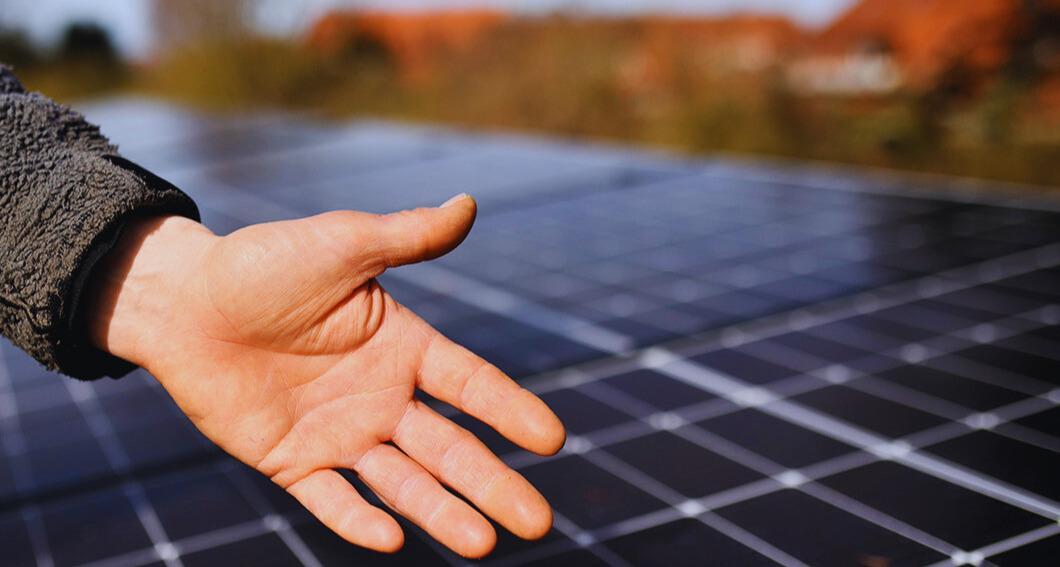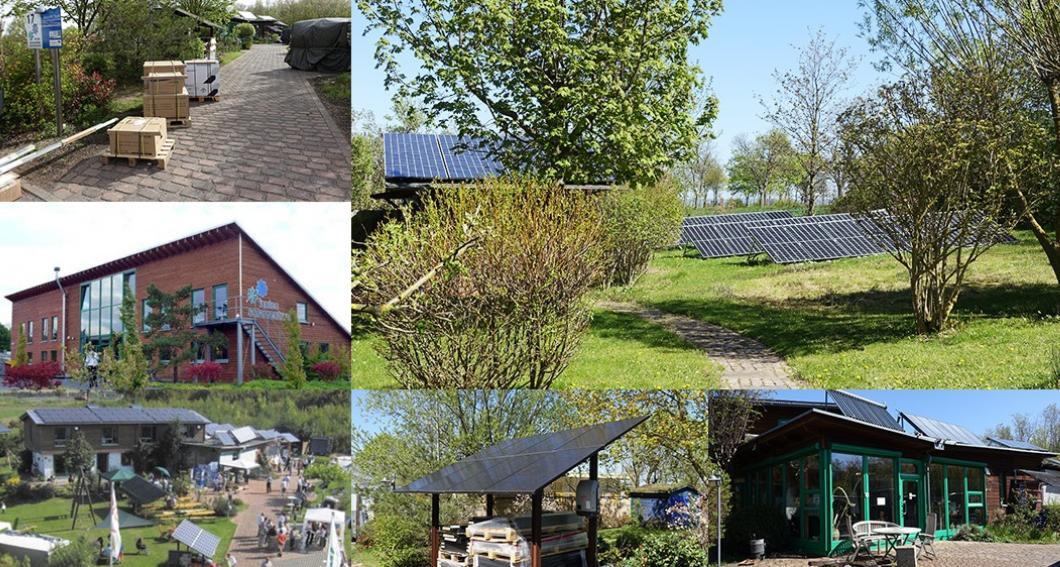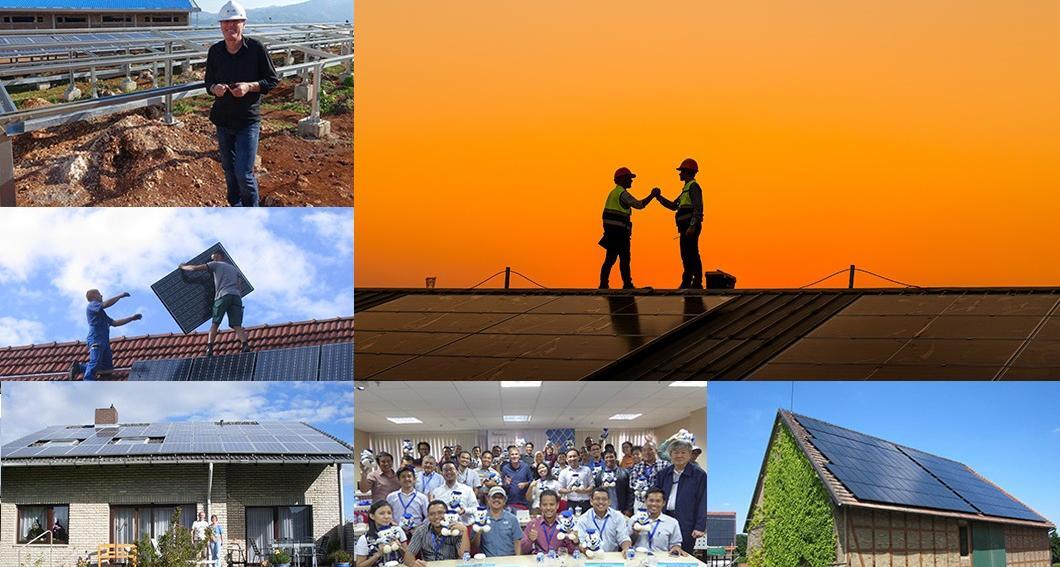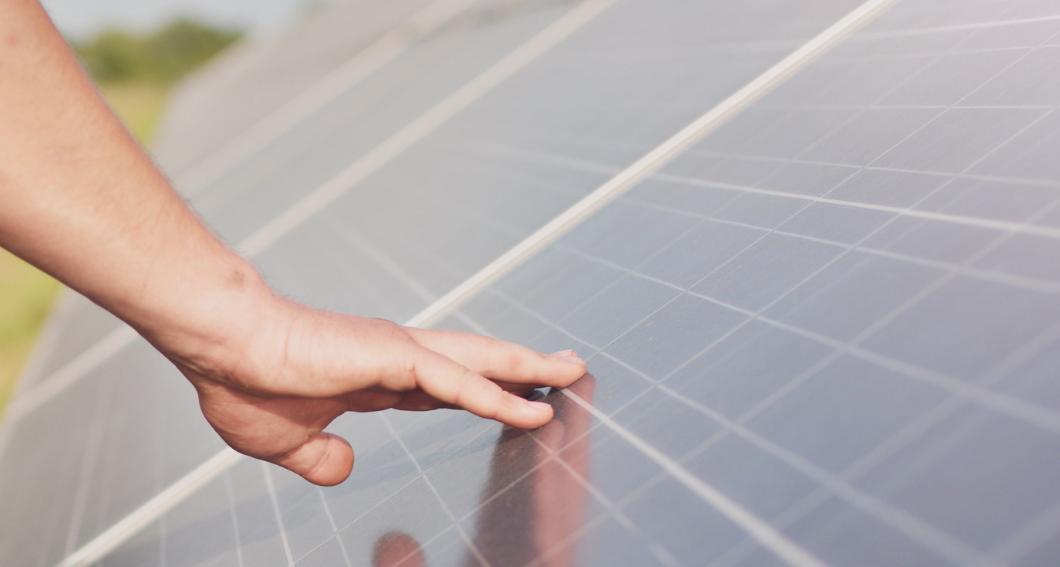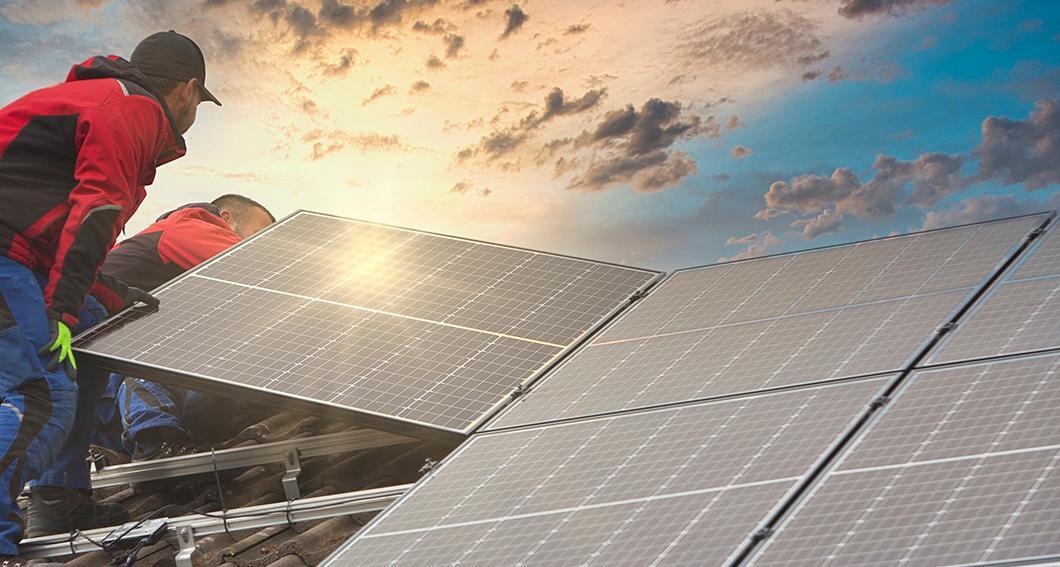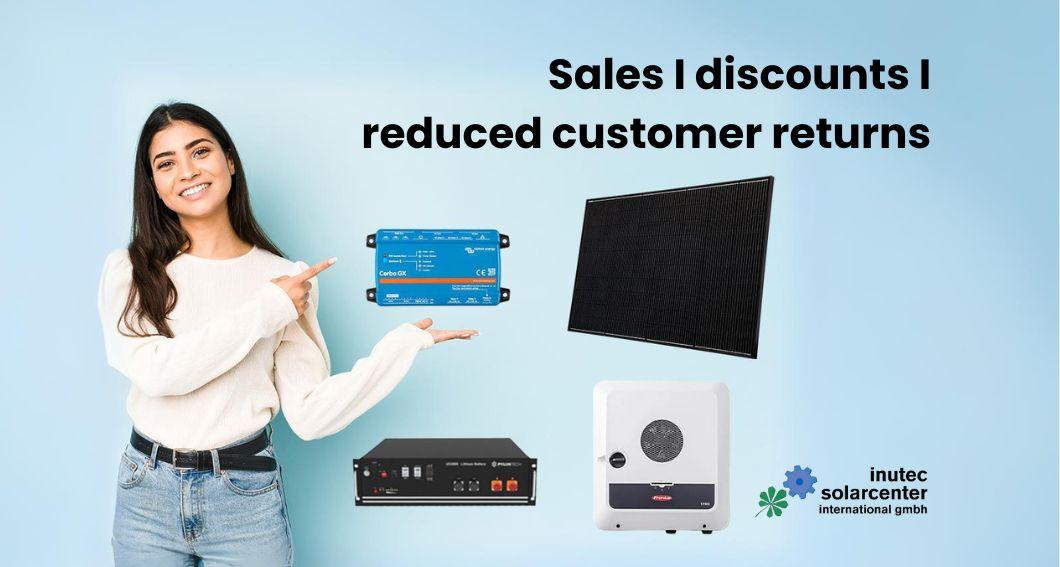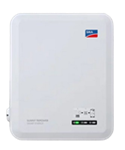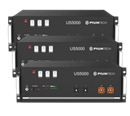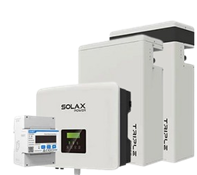Inverter
Inverter
The inverter is an important component in photovoltaics. Its main task is the conversion of direct current into alternating current. It also ensures optimal power supply, monitors the electricity grid and collects important data for maintenance.
There are different types of inverters for a variety of uses, such as solar inverters, battery inverters and hybrid inverters. Read on to find out more about each inverter type and get helpful recommendations from the expert with 25 years of experience.
CONTENTS
What is an inverter?
Inverters (or power inverters) are a key component in photovoltaics.
An inverter converts the direct current of the solar modules or battery into grid-compatible alternating current. This alternating current is compatible with the existing power grid so that commercially available AC consumers such as lamps and kitchen appliances can be operated.
What does an inverter do?
In addition to the conversion of DC voltage into AC voltage inverters fulfill other important tasks:
- They ensure an optimal power supply. While PV inverters ensure that the solar modules are operated at optimum performance, battery inverters handle the controlled charging, care and discharge of the battery.
- They monitor the power grid and can protect it against overloading by reducing its own power if necessary.
- They collect important operating data via a communication interface so that any malfunctions can be detected more quickly. The data is read out directly at the inverter or via a connected online service.
To fulfill these tasks, state-of-the-art technology is installed in the devices. Nevertheless, inverters must be robust to withstand all weather conditions for years to come.
What are the different types of inverters?
Inverters can be divided into:
- Grid-connected inverters (PV inverters)
- Battery inverters (bidirectional)
- Hybrid inverters or All in One inverters
- Pure sine wave inverters
Below, we will take a closer look at the inverter types.
1. PV inverter (grid-connected inverter)
The most commonly used inverter is the grid-connected inverter. It is also called a photovoltaic (PV) inverter or solar inverter.
PV inverters convert the direct current of the photovoltaic modules into grid-compatible alternating current. This process only works in one direction, from the solar module to the grid current.
If the grid is disturbed or not available for any reason, the solar inverter would not produce either. In Germany this safety function is called ENS. It ensures that the PV system comes to a standstill immediately in the event of a power failure.
The power of the grid-connected inverters can flow directly to the consumers. It can also be fed into the grid and make sure that a battery is charged. But in this case a second device, namely a bidirectional battery inverter is required.
There are single-phase and three-phase PV inverters. As a rule, up to 5 kW, mostly single-phase inverters are represented. Above 5 kW power, a three-phase inverter is absolutely necessary, so that the three-phase current phases L1, L2 and L3 are balanced, i.e. evenly supplied. Otherwise, there would be a large return current on the neutral conductor, which would be unfavorable for the grid.
For the best possible optimization of the power required in your own building, a three-phase inverter is better suited. It can also supply consumers connected to the other two phases (e.g. L2 and L3).
Which inverter manufacturers of grid-connected PV inverters are there?
There are many companies that manufacture solar inverters, starting from 0.2 kWp up to 2,000 kWp as the central inverter. Well-known manufacturers include SMA, the Austrian company Fronius as well as ABB, KACO, Kostal, OutBack Power, Victron Energy, Studer, SolarEdge and several Chinese suppliers.
Which brands are recommended?
After installing thousands of grid-connected solar inverters over the past 25 years, we favor the SMA inverters.
The world's leading manufacturer from Germany offers highly developed and durable inverters with the SMA Sunny Boy series (single-phase) from 1.5 to 6 kWp and the Sunny Tripower (three-phase) from 3 to 150 kWp.
The aforementioned devices belong to the most widely used group of string inverters. Here, when higher power is required, multiple inverters of the same or different type are connected in series to provide the desired performance to the grid.
In addition, the large central inverters are called SMA Sunny Central.
2. Battery inverter
Since a battery can only store DC power, the battery inverter converts the DC voltage from the battery to AC voltage to provide energy and power to the AC consumers. In contrast to the PV inverter, the battery inverter can't directly convert or process the energy of the solar panels.
Instead, the battery inverter enables the generation of a high-quality, off-grid island or house grid, in order to ensure operation without a grid (off-grid or back-up operation).
Which brands manufacture battery inverters?
The most well-known bi-directional battery inverter is the SMA Sunny Island, which offers a high-quality industrial standard and can reliably supply entire villages with solar power (up to a maximum of 300 kW in one grid).
But Victron Energy's Multiplus and Quattro battery inverters are also widely used, as are the FXR and VXR inverters from OutBack Power.
3. Hybrid inverter
Hybrid inverters or all-in-one inverters are relatively new on the market. They combine the functions of a PV inverter and a battery inverter in one device. These devices are less expensive than two single devices and require less installation effort. In the absence of a grid, some devices can also generate their own grid, i.e. island or off-grid or backup operation. In the next few years, the range of hybrid inverters will continue to increase.
Which brands make hybrid inverters?
Manufacturers include Alpha & OutBack Power (can not feed into the public grid), IMEON Energy and the Chinese vendor Solax. Recently, there are also devices from KACO and Kostal Plenticore (can not create its own grid).
4. Pure sine wave inverter
Sinus inverters are always monodirectional (from the battery to AC consumers) and are always connected directly to the battery. This type of inverter is used only in DC-coupled systems, i.e. in systems where mainly DC current flows and the battery is charged via a charge controller (DC / DC converter).
The most well-known device series of this type are the Phoenix inverters of the Dutch company Victron Energy.
Which inverter is the best for which application?
After thousands of installed inverters in the past 25 years, we particularly like to use the SMA solar inverters. These have proven to be very durable, are of high quality and offer many features and possibilities. There is also a comprehensive system of components available free of charge through Sunny Portal, the world's largest PV monitoring platform. Our first own SMA inverter runs since the year 2000 without any disturbance and maintenance outside in any wind and weather.
In the field of battery inverters, the SMA Sunny Island is the technical and qualitative optimum.
For self-consumption, the all-in-one and hybrid inverter have price advantages. If you do not want to sell your PV power into the public grid, the OutBack Power SPC III inverters or, for higher outputs, the 3-phase SPC II system are priced favorably. The renowned manufacturer Alpha & Outback, with its European headquarters in Schwabach, Germany, offers excellent service and support.
Otherwise we like the KACO hybrid inverter a lot (high voltage). We are also looking forward to the new devices from IMEON Energy, a pioneer of all-in-one inverters.
In the field of vehicle technology but also of home systems (focus without grid connection, DC-BUS) Victron Energy has a leading program with many possibilities to offer.
Which type of inverter is particularly recommended?
There are different approaches:
Start
First of all, you can opt for a low-cost PV system with only modules and a grid-connected PV inverter. This way you use the PV power when it accumulates and save (for now) the cost of a storage system and battery- or hybrid-inverter.
Here we recommend the three-phase SMA Sunny Tripower (STP) inverters for optimized self-consumption. These are not only good and durable, but also offer all the accessories and many options, such as the SMA Energy Meter, SMA Sunny Home Manager 2.0 and the free Sunny Portal. In terms of price, STP inverters from SMA are also a good choice. They are not more expensive than comparable offers from competitors.
The advantage over a single-phase PV inverter: The solar power reaches your AC consumers on all three phases. Your self-consumption rate is therefore higher. A storage system can be added at any time.
Battery storage
If you want to get a PV system with battery storage right away, you would also have to decide in favor of a battery system together with the inverter. Because these two components should fit together and must be certified. One of the bidirectional hybrid inverters or all-in-one inverters is probably the best choice for home use.
DC-coupled systems
If you have opted for a DC-coupled system (usually without grid connection), you need a charge controller. And for AC consumers, you will need a monodirectional pure sine wave Inverter.

